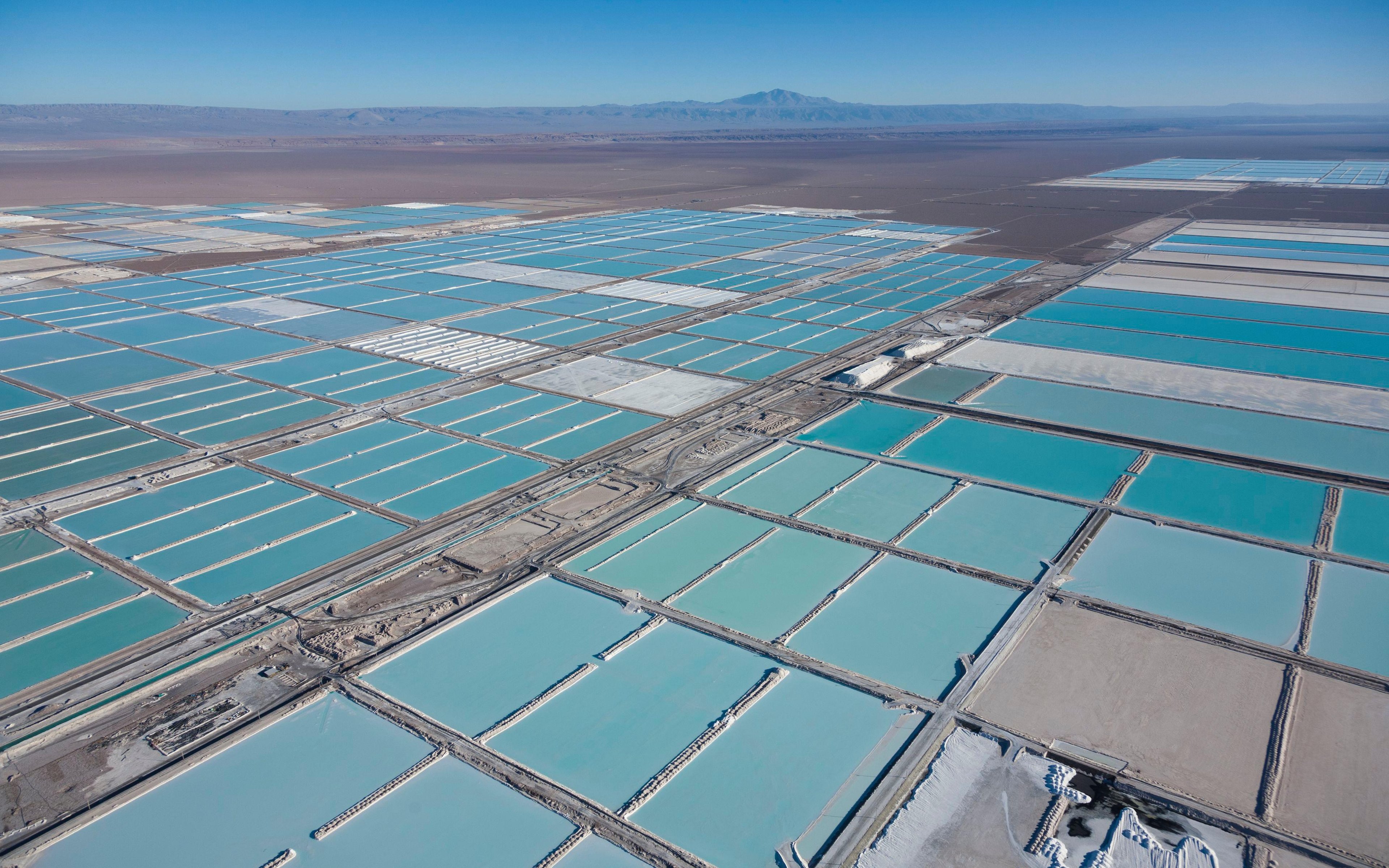Investors should carefully consider the objectives, risks, charges and expenses of the Fund before investing. This information and other information about the Fund can be found in the prospectus and summary prospectus. For a prospectus or summary prospectus please visit our website at https://usmutualfund.bailliegifford.com. Please carefully read the Fund’s prospectus and related documents before investing. Securities are offered through Baillie Gifford Funds Services LLC, an affiliate of Baillie Gifford Overseas Limited and a member of FINRA.
In 1999, the world's first graphics processing unit (GPU), the NVIDIA GeForce, was a marvel. This powerful computer chip could create stunning 3D graphics by processing over 10 million shapes per second.
This was the output:

Impressive? For those familiar with gaming graphics capabilities today, hardly. But by the standards of the day, it was a revelation that presaged NVIDIA’s dominance in parallel computing, the backbone of today’s artificial intelligence revolution.
Building on this legacy, a recent breakthrough in AI created a new revelation. In Hangzhou, the capital of China’s Zhejiang province, far from Silicon Valley’s gleaming campuses, a team of researchers at DeepSeek scored a coup. They appeared to make a dramatically more efficient AI for a mere (disputed) $6m, a fraction of others’ spending. It caught markets unawares, and a sell-off in AI-related companies ensued. What might this newfound efficiency mean for NVIDIA’s GPU sales?
It is difficult to predict the impact on long-term returns, so a patient approach is required amid rapid change.
Prof Carlota Perez’s research helps us understand the significance of such breakthroughs. Her work examines how technological revolutions propagate through society. Innovations initially benefit a small part of the economy before broader diffusion occurs as costs decrease. This creates a self-reinforcing cycle where each advancement reduces costs and increases accessibility. The more widespread the technology becomes, the more others can innovate upon it.
The life cycle of the technological revolution

Source: Perez, Carlota (2002), Technological Revolutions and Financial Capital: The Dynamics of Bubbles and Golden Ages, Edward Elgar, Cheltenham.
Today’s AI revolution exemplifies this pattern. Computer systems process vast amounts of data to create better AI models, which become more efficient and accessible through cloud computing and apps. Benefits accrue at first to the few and broaden out over time. Efficiencies like DeepSeek’s further democratise access.
We’ve been thinking about this for a long time, actively managing exposure as things evolve. Over the last few years, NVIDIA has been the prime beneficiary of the AI revolution. We first invested in NVIDIA in 2016, excited by its potential beyond gaming applications like AI and computer vision. Our clients have benefited from the subsequent returns.
However, decades of investing in the semiconductor industry have taught us that demand is cyclical. Partly because of this, we significantly reduced our holding in NVIDIA on three occasions throughout 2024. Our conversations with leading private AI companies, chip designers, and customers suggested growing interest in alternatives to NVIDIA’s GPUs and a potential shift towards ‘inference’, a software job for which GPUs may be overqualified. Considering these insights and DeepSeek’s advancement, we further reduced the position in January.
These decisions balance near-term demand and valuation considerations with NVIDIA’s long-term potential. For example, NVIDIA could still benefit from resumed hyperscale spending on more efficient models.
And in a sign of how quickly things change, an even more recent development challenges this thinking. Elon Musk’s company, xAI, released a powerful AI programme built using a massive GPU warehouse, showing that hardware speed and scale can still produce compelling results. NVIDIA’s leadership team has a track record of adapting to meet demand, remaining at the leading edge of GPU computing capability. It is a critical player in this technological revolution.
As this fast-paced field develops, we’ve been looking beyond the hardware innovators, recycling capital into companies further along the AI value chain. We added to Cloudflare, the internet security and performance company, given its globally distributed edge-computing network, which is closer to the customer and reduces latency. It could become the fourth cloud computing giant.

© 2019 rafapress/Shutterstock.
Elsewhere, we invested in Globant because we believe traditional enterprises will need specialised assistance to maximise AI’s potential. Our Meta holding, meanwhile, has seen impressive advertising returns on its hefty AI chip capital spending and has adapted well to new events by quickly mobilising to understand and implement DeepSeek’s advantages.
Along with lessons from Prof Carlota Perez, laws governing technological dynamics – Wright’s Law on manufacturing efficiency, Jevon’s Paradox on demand, and Metcalf’s Law on network effects – help predict future developments. Just as these principles accurately forecasted Tesla’s evolution in battery technology and manufacturing efficiency when we first invested over a decade ago, they now suggest accelerating AI adoption and innovation across industries.
The future points toward greater abundance, where emerging businesses can create enormous value and become tomorrow’s market leaders, much like our experience with NVIDIA over the last nine years.
Our vantage point in Edinburgh enables our patient approach amid a noisy market, away from the cacophony of London and Wall Street and underpinned by Baillie Gifford’s partnership structure and long-term perspective.
This allows us to consider the long-term structure of technological revolutions as we shape our portfolios for the next five to 10 years of change. Meanwhile, most market participants fixate on immediate events, like DeepSeek’s efficiency gains.
Just as NVIDIA’s first GPU seeded today’s AI revolution, the latest progress sparks tomorrow’s exceptional growth opportunities. The greatest investment returns can flow to those who recognise transformative change early, look past short-term volatility, and adjust their thinking as new evidence emerges. Our patient, long-term approach to identifying and backing exceptional growth – whatever the weekly ructions of the markets – remains.
Risk factors
This content contains information on investments which does not constitute independent research. Accordingly, it is not subject to the protections afforded to independent research and Baillie Gifford and its staff may have dealt in the investments concerned.
As with all mutual funds, the value of an investment in the fund could decline, so you could lose money.
The most significant risks of an investment in the Baillie Gifford US Equity Growth Fund are Investment Style Risk, Growth Stock Risk, Long-Term Investment Strategy Risk, Geographic Focus Risk and Non-Diversification Risk. The Fund is managed on a bottom up basis and stock selection is likely to be the main driver of investment returns. Returns are unlikely to track the movements of the benchmark. The prices of growth stocks can be based largely on expectations of future earnings and can decline significantly in reaction to negative news. The Fund is managed on a long-term outlook, meaning that the Fund managers look for investments that they think will make returns over a number of years, rather than over shorter time periods. The Fund focuses on investments in the US, meaning it may offer less diversification and be more volatile than other funds. The Fund may have a smaller number of holdings with larger positions in each relative to other mutual funds. Other Fund risks include: Conflicts of Interest Risk, Equity Securities Risk, Environmental, Social and Governance Risk, Focused Investment Risk, Government and Regulatory Risk, Information Technology Risk, Initial Public Offering Risk, Large-Capitalization Securities Risk, Liquidity Risk, Market Disruption and Geopolitical Risk, Market Risk, New and Smaller-Sized Funds Risk, Service Provider Risk, Small-and Medium-Capitalization Securities Risk and Valuation Risk.
For more information about these and other risks of an investment in the fund, see “Principal Investment Risks” and “Additional Investment Strategies” in the prospectus. The Baillie Gifford US Equity Growth Fund seeks capital appreciation. There can be no assurance, however, that the fund will achieve its investment objective.
The fund is distributed by Baillie Gifford Funds Services LLC. Baillie Gifford Funds Services LLC is registered as a broker-dealer with the SEC, a member of FINRA and is an affiliate of Baillie Gifford Overseas Limited.
All information is sourced from Baillie Gifford & Co and is current unless otherwise stated.
The images used in this article are for illustrative purposes only.
Top 10 holdings
| Holdings | Fund % |
| 1. Amazon | 8.02 |
| 2. The Trade desk | 7.96 |
| 3. Shopify | 6.84 |
| 4. Netflix | 5.66 |
| 5. Meta | 5.52 |
| 6. DoorDash | 5.12 |
| 7. NVIDIA | 4.91 |
| 8. Cloudflare | 4.39 |
| 9. Duolingo | 3.29 |
| 10. Tesla | 3.26 |
It should not be assumed that recommendations/transactions made in the future will be profitable or will equal performance of the securities mentioned. A full list of holdings is available on request. The composition of the fund's holdings is subject to change. Percentages are based on securities at market value.
142718 10053752





